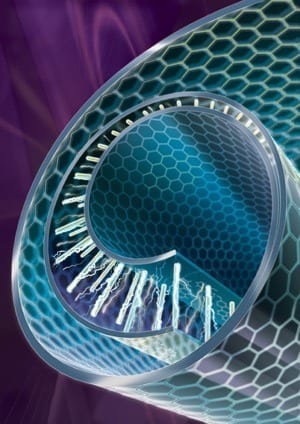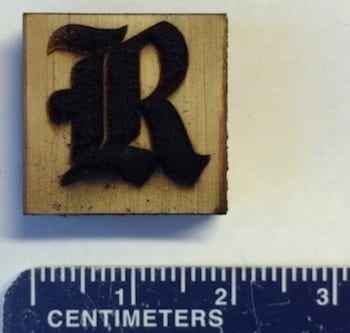
An international team of researchers led by the University of Bern and the National Physical Laboratory (NPL) has revealed a new way to tune the functionality of next-generation molecular electronic devices using graphene. The results could be exploited to develop smaller, higher-performance devices for use in a range of applications including molecular sensing, flexible electronics, and energy conversion and storage, as well as robust measurement setups for resistance standards.
The field of nanoscale molecular electronics aims to exploit individual molecules as the building blocks for electronic devices, to improve functionality and enable developers to achieve an unprecedented level of device miniaturization and control. The main obstacle hindering progress in this field is the absence of stable contacts between the molecules and metals used that can both operate at room temperature and provide reproducible results. Graphene possesses not only excellent mechanical stability, but also exceptionally high electronic and thermal conductive properties, making the emerging 2D material very attractive for a range of possible applications in molecular electronics.
A team of experimentalists from the University of Bern and theoreticians from NPL (UK) and the University of the Basque Country (UPV/EHU, Spain), with the help of collaborators from Chuo University (Japan), have demonstrated the stability of multi-layer graphene-based molecular electronic devices down to the single molecule limit. The findings, reported in the journal Science Advances, represent a major step change in the development of graphene-based molecular electronics, with the reproducible properties of covalent contacts between molecules and graphene (even at room temperature) overcoming the limitations of current state-of-the-art technologies based on coinage metals.
Connecting single molecules
Adsorption of specific molecules on graphene-based electronic devices allows device functionality to be tuned, mainly by modifying its electrical resistance. However, it is difficult to relate overall device properties to the properties of the individual molecules adsorbed, since averaged quantities cannot identify possibly large variations across the graphene’s surface.
Dr Alexander Rudnev and Dr Veerabhadrarao Kaliginedi, from the Department of Chemistry and Biochemistry at the University of Bern, performed measurements of the electric current flowing though single molecules attached to graphite or multi-layered graphene electrodes using a unique low-noise experimental technique, which allowed them to resolve these molecule-to-molecule variations. Guided by the theoretical calculations of Dr Ivan Rungger (NPL) and Dr Andrea Droghetti (UPV/EHU), they demonstrated that variations on the graphite surface are very small and that the nature of the chemical contact of a molecule to the top graphene layer dictates the functionality of single-molecule electronic devices.
“We find that by carefully designing the chemical contact of molecules to graphene-based materials, we can tune their functionality,” said Dr Rungger. “Our single-molecule diodes showed that the rectification direction of electric current can be indeed switched by changing the nature of chemical contact of each molecule,” added Dr Rudnev.
“We are confident that our findings represent a significant step towards the practical exploitation of molecular electronic devices, and we expect a significant change in the research field direction following our path of room-temperature stable chemical bonding,” summarized Dr Kaliginedi. The findings will also help researchers working in electro-catalysis and energy conversion research design graphene/molecule interfaces in their experimental systems to improve the efficiency of the catalyst or device.
Learn more:Graphene electrodes offer new functionalities in molecular electronic nanodevices
[osd_subscribe categories=’molecular-electronic-nanodevices’ placeholder=’Email Address’ button_text=’Subscribe Now for any new posts on the topic “MARS’]
The Latest on: Molecular electronic nanodevices
[google_news title=”” keyword=”molecular electronic nanodevices” num_posts=”10″ blurb_length=”0″ show_thumb=”left”]- Strictly no dancing: Researchers discover 'new molecular design rules'on May 8, 2024 at 8:51 am
Often referred to as molecular vibrations, the motion of atoms act like tiny springs, undergoing periodic motion. For electrons in these systems, being joined to the hip with these ...
- Northwell opens $3.2M Molecular Diagnostics Laboratoryon May 7, 2024 at 9:22 am
The Northwell Health Cancer Institute and its Center for Genomic Medicine announced the opening of Long Island’s first clinical Molecular Diagnostics Laboratory (MDL), a $3.2 mi ...
- News tagged with molecular biologyon April 28, 2024 at 5:00 pm
The Wistar Institute's associate professor Mohamed Abdel-Mohsen, Ph.D., along with his team and collaborators, has identified sugar abnormalities in the blood that may promote biological aging and ...
- Biochemistry and Molecular Biology Majoron April 26, 2024 at 9:23 am
This Bachelor of Science (B.S.) degree is offered jointly by the departments of biology and chemistry, with six full-time professors with Ph.D.'s in either biochemistry or molecular biology. This ...
- More efficient molecular motor widens potential applicationson April 26, 2024 at 2:00 am
Light-driven molecular motors were first developed nearly 25 years ago at the University of Groningen, the Netherlands. This resulted in a shared Nobel Prize for Chemistry for Professor Ben Feringa in ...
- Molecular Communications for Nano-Deviceson April 15, 2024 at 2:40 pm
Therefore, molecular communications (MC) is of particular interest to researchers because of the low-power requirements and the advantages of signal energy endurance and random propagation. MC is ...
- New molecular device unlocks potential for targeted drug delivery and self-healing materialson April 9, 2024 at 5:00 pm
In a new breakthrough that could revolutionize medical and material engineering, scientists have developed a first-of-its-kind molecular device that controls the release of multiple small ...
- Molecular Omicson April 9, 2024 at 2:23 pm
The guide will also help if for any reason you have difficulty accessing the content you want. Molecular Omics publishes high-quality research in the -omics sciences. We welcome scientific research ...
- Team modulates electronic state of single-atom catalysts by CO molecular decoration for efficient methane conversionon March 26, 2024 at 12:58 pm
The researchers proposed a strategy involving CO molecule modification to regulate the electronic structure ... developed the electronically tunable molecular sieve-supported M 1-O isolated ...
- Biochemistry and Molecular Geneticson October 30, 2023 at 5:00 pm
Committed to exploring new frontiers in basic and translational research, the Department of Biochemistry and Molecular Genetics is an integral part of the vibrant biomedical research community at UAB.
via Google News and Bing News










